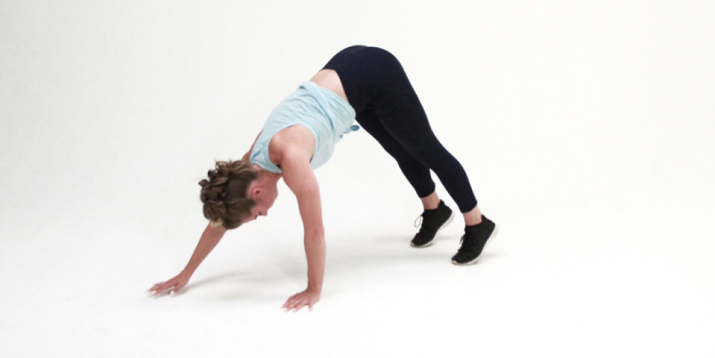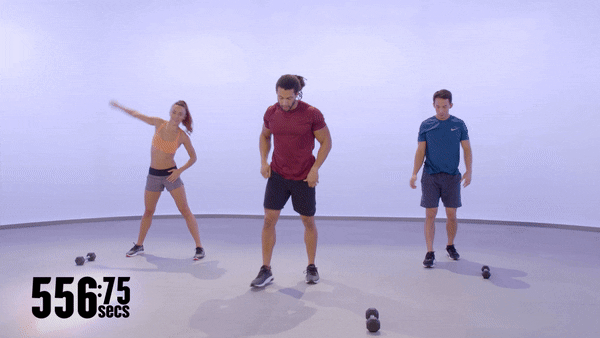How to Do the Inchworm Exercise

Inchworms aren’t particularly regarded for their core strength — there aren’t any selfies of caterpillars showing off their 106-pack abs, after all. But the inchworm exercise is a solid go-to exercise when you’re looking to strengthen your core.
Sometimes called the walkout exercise, this low-impact, standing-to-plank-position move is popular among trainers with good reason.
“The inchworm is primarily a core exercise, but you’ll also feel it in your shoulders, glutes, and hamstrings,” says Trevor Thieme, C.S.C.S. “It works muscles all over your body.”
Best of all, it can be progressed easily to make it more challenging.
Inchworm Exercise: Step-by-Step Instructions
- Stand tall with your feet hip-width apart and your arms at your sides.
- Keeping your core engaged and back flat, hinge forward at your hips and place both palms on the floor. Bend your knees slightly if necessary.
- Walk your hands forward until you assume a high-plank position. Your wrists should be directly under your shoulders and your body should be straight from head to heels.
- Reverse the movement, walking your hands back toward your feet, to return to the starting position.
What Muscles Does the Inchworm Exercise Target?
The inchworm is a compound (multi-joint) exercise that hits several major muscles.
Core
You have to stabilize your spine as you bend and walk your hands forward, and that lights up your abdominal and spinal erector muscles. These stay engaged as you keep your back and hips in alignment while in plank, and continue to fire up as you walk your hands back.
Arms, shoulders, and chest
As you come into high plank — and especially if you add a push-up to the sequence (more on that in a bit) — your pecs, delts, and triceps engage to support and move your body.
Inchworm Variations
The following variations are a great way to make the inchworm exercise part of a dynamic warm-up — it’s a low-impact move that not only engages many major muscle groups, but also helps increase mobility and flexibility by working your arms and hips through large ranges of motion.
1. Inchworm push-up
From the high-plank position, lower your torso until your chest is within a few inches of the floor, and then push back up before returning to standing.
2. Inchworm to low plank
From a high plank, lower your right forearm to the floor, and then your left. Push back up to a high plank and then return to standing.
3. Inchworm to cobra

From a high plank, lower your torso until your chest is within a few inches of the floor, then press into your palms and lift your chest off the floor using your arm and back muscles, creating an arch in your lower back. Lift your hips up to return to standing.
4. Inchworm to alternating side plank
From a high plank, transition to a side plank by shifting your weight onto one arm and rotating your body to raise the other one toward the ceiling. Return to a high plank and repeat on your other side before resuming the inchworm and returning to standing.
5. Inchworm pounce reverse
From high-plank, push your hips back over your feet by bending your knees without letting them touch the ground, keeping your arms extended out in front of you. Then move back to a high plank before returning to standing.
6. Inchworm to sumo squat jump
When you return to the starting position, hop your feet out wide and perform a sumo squat, or keep your feet together for a squat jack.
